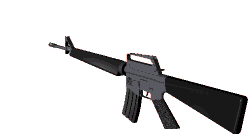Initial Entry Training (or Basic Training) teaches the basic skills necessary to be a combat soldier. This training includes:
Basic Soldiering Skills
Basic Soldiering Skills include weapons familiarization, (M-203 grenade launcher, M-16 rifle, M-60 machine gun, Light Antitank Weapon (LAW), claymore mine and hand grenades) friendly and threat vehicles, teamwork, leadership, military protocol, navigation, movement under fire, and night operations.
Physical Conditioning
Physical Conditioning is a regimen of rigorous activities including push-ups, sit-ups, road marches with packs, running, swimming, general strength and endurance training. The Army Physical Fitness Test (APFT) consists of three events, push-up, sit-up, and the 2 mile run. The APFT is scored on a scale of 300 points (100 points per event) with a minimum passing score of 60 points per event.
Drill and Ceremony
Drill and Ceremony training teaches individual and unit level drill movements such as the position of attention, at ease, hand salute, left shoulder arms with a rifle, column left, right face, march, etc.
Rifle Marksmanship
Basic Rifle Marksmanship: BRM training covers rifle marksmanship from introduction to the M16 rifle through qualification and NBC/Night fire. Additional information is here.
 Hand
Grenade Assault Course
Hand
Grenade Assault Course
The hand grenade assault course is a course of obstacles with targets (rings
on the ground) that you must navigate and properly pull the pin and throw
six grenades at the targets. The smallest target being a car tire at 50 feet.
Combat Survivability
Combat Survivability teaches skills used in combat, including hand-to-hand combat, operating in a hostile environment, survival skills, use of the M-9 bayonet, land navigation, tactical operations, Nuclear, Biological and Chemical (NBC) procedures, Field Training eXercises (FTX) and the confidence course.
Basic First Aid
Basic First Aid teaches triage, CardioPulmonary Resuscitation (CPR), controlling bleeding with major and minor pressure points, pressure dressings, tourniquets, splinting, treating major wounds, shock, heat and cold-related injuries, treating burns, fractures, and traumatic amputation.